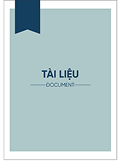Tài liệu
What drives target status decision in emerging markets acquisitions?

Xem mô tả
155
Xem & Tải
2
Tóm tắt
Purpose – The purpose of this paper is to investigate the effects of cross-country characteristics on acquirers’ target status choice in cross-border mergers and acquisitions across 41 emerging markets. Design/methodology/approach – The paper first reviews the existing literature and develops the related hypotheses, in conjunction with the objectives of this paper. We then describe the data employed, variable measurement and examine the effects of cross-country characteristics on the acquirers’ target status choice in cross-border mergers and acquisitions while controlling for firm-level and deal-specific characteristics. The paper continues to conduct the robustness check on cross-country determinants of target status choices using the difference independent variables rather than target country-level variables only. Findings – This research found that the like lihood of a public firm acquired relative to private one is higher if the target firm is located in countries with stronger government quality, weaker economic freedom, better financial market development and lower cultural distance between the host and home countries. The results suggest that bidders actively assess cross-country characteristics as part of their acquisition planning. Originality/value – Rather than commonly analysed determinants in the previous research such as firm- and deal-specific attributes, value creation and shareholder protection, this paper indicates that institutional environments and economic conditions are closely associated with acquisition risks and benefits and have direct influences on bidder firms’ acquisition bidding planning and target choice decision-making.
Mô tả
Economic Investment
Tác giả
Hoang, Viet Anh
Dang, Man
Nguyen, Ngoc Vu
Nguyen, Ngoc Thang
Darren Henry
Người hướng dẫn
Nơi xuất bản
Nhà xuất bản
Kinh Tế Quốc Dân
Năm xuất bản
2021
ISBN
1986-0020
ISSN
Từ khóa chủ đề
Country-level characteristics , Target status decision , Cross-border mergers and acquisitions , Emerging markets , Imperfect factor markets
Trích dẫn
Bộ sưu tập
Tệp tin

10-1108_JED-05-2020-0059.pdf
D:\NEU_DSpace\tapchitienganh
Dung lượng: 140.66 KBĐịnh dạng: pdf
Lượt xem: 0 Lượt tải: 2
